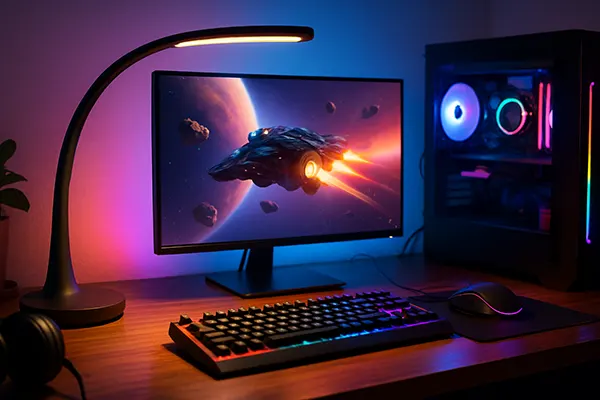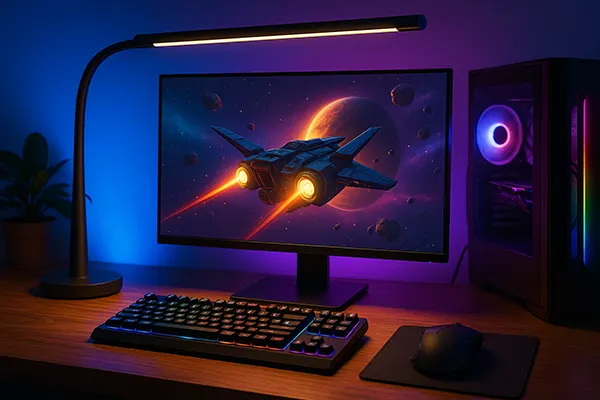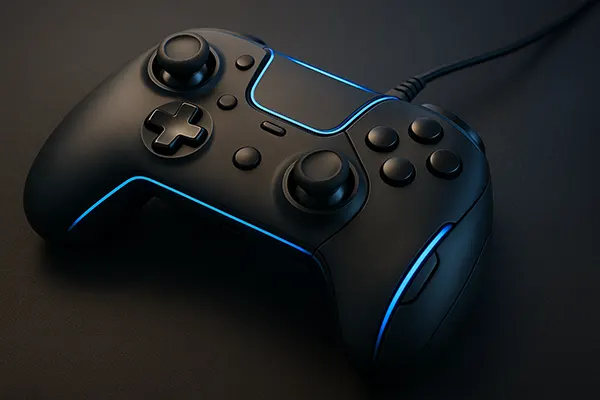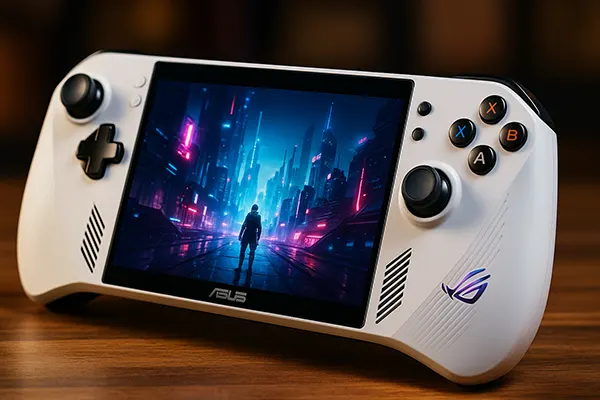
Smart Desk Lamps for Gamers: Colour, Rhythm and Eye Health
Lighting is often underestimated in gaming setups, yet it plays a fundamental role in comfort, focus, and health. Modern smart desk lamps are not just about illumination — they combine advanced technologies to protect vision, reduce eye strain, and create a personalised atmosphere that synchronises with gaming experiences.
The Importance of Smart Lighting in Gaming
Gamers spend long hours in front of screens, which makes lighting quality crucial. Traditional lamps often fail to adapt to varying conditions, leading to fatigue and discomfort. Smart desk lamps, however, offer adaptive brightness, colour control, and dynamic features that enhance the environment without overwhelming the eyes.
One of the key benefits is the ability to reduce exposure to disruptive blue light in the evening. By adjusting colour temperature to warmer tones, smart lamps support circadian rhythms and improve sleep quality after late-night sessions. This approach aligns with research in ergonomics and health-focused lighting design.
Another aspect is concentration. Properly balanced light creates a focused environment where the brain can maintain attention without unnecessary strain. For competitive gaming, this can be the difference between sustained performance and fatigue-driven errors.
Technologies Behind Smart Desk Lamps
Many modern lamps include “tunable white” technology, which allows users to shift seamlessly between cool and warm tones. Cooler light supports alertness, while warmer tones promote relaxation. This flexibility ensures that gamers can choose the right setting for different activities.
Circadian lighting is another innovation, automatically adjusting brightness and tone throughout the day to align with the body’s natural rhythms. By simulating daylight patterns, these lamps reduce stress on the eyes and promote healthier sleep cycles.
RGB synchronisation adds an immersive touch. Integrated with gaming software, lamps can respond in real time to in-game events, extending the atmosphere beyond the screen. For instance, battle sequences can trigger dynamic red glows, while calmer scenes shift to cooler blues.
Examples of Leading Smart Desk Lamps
Among the most discussed products in 2025 are the BenQ ScreenBar and the Philips Hue Play Gradient. Both models highlight how innovation transforms everyday lighting into a tool for well-being and immersion.
The BenQ ScreenBar is designed specifically for desk setups. It attaches to the top of a monitor, providing balanced illumination without glare. Its auto-dimming sensor adapts brightness according to ambient conditions, reducing unnecessary strain on the eyes.
Philips Hue Play Gradient offers a different angle by combining RGB technology with advanced synchronisation features. It can extend game visuals across the room, creating a more engaging atmosphere while still offering practical light settings for everyday use.
Practical Benefits in Everyday Gaming
Smart lamps are more than gadgets — they are functional tools that directly affect gaming performance. Better lighting supports longer sessions without headaches or blurred vision, which is crucial for both casual players and professionals.
Additionally, mood-enhancing lighting helps reduce stress during intense matches. Adjusting brightness and colour can calm the nervous system and prevent overstimulation, making the experience healthier in the long run.
From a design perspective, these lamps also contribute to an organised and aesthetically pleasing setup. With minimalist builds and wireless controls, they integrate seamlessly into modern gaming environments.

How Lighting Influences Focus and Health
Scientific studies confirm that inadequate lighting leads to faster eye fatigue, reduced concentration, and even long-term vision issues. For gamers, who often play in dim or overly bright conditions, this becomes a significant concern. Smart lighting provides a reliable solution by automatically adapting to the body’s needs.
Controlled brightness and adjustable colour tones help the eyes remain relaxed. Unlike static lamps, which force users to adjust manually, smart lamps create a stable environment, enabling players to stay focused for hours without discomfort.
Long-term benefits include improved sleep patterns, lower stress levels, and protection against digital eye strain. These factors highlight the role of lighting not just as a visual tool, but as an integral part of gaming health strategies.
The Future of Gaming Illumination
With continuous advances, smart lamps are expected to integrate even more deeply with gaming systems. AI-driven features may predict a player’s needs based on activity, offering customised light patterns that align with mood and performance goals.
We can also expect broader adoption of sustainable designs, including energy-efficient LEDs and recycled materials. This trend makes smart lamps both health-friendly and environmentally responsible.
For gamers looking to combine comfort, performance, and innovation, investing in a high-quality smart desk lamp is no longer optional — it is a key element of a complete gaming setup in 2025.





